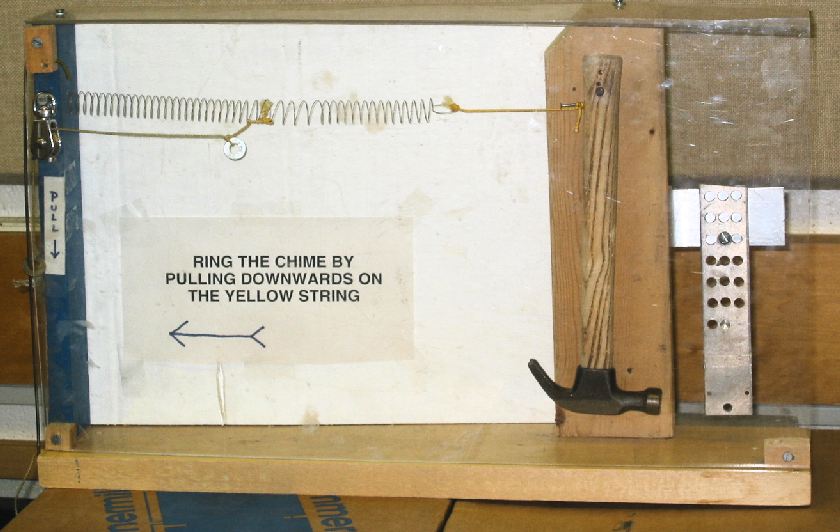
Instructions for:
Make the Hammer Hit the Chime
To make the hammer hit the chime we need to give some energy to the hammer, because as the hammer swings it is moving upwards slightly, against the gravitational force. The way to add energy to something is to pull on it while it is moving towards you. The amount of energy added depends on how hard you pull (but this is limited by the weakness of the spring and the fact that you can't stretch it very much because you can't pull the string very far) and how far you pull the string (which is limited). So you can only add a small amount of energy with one pull, and this is not enough to lift the hammer to where it hits the chime. But it does get the hammer swinging.
When the hammer is swinging, the energy given to it is in two forms: energy of motion, and the gravitational energy when it is displaced away from the starting vertical position. These two forms of energy trade back and forth, with the total remaining more or less constant until you add another bit of energy. So the trick to get the hammer making a large swing is to watch it and only pull when the hammer is away from you (and then stop pulling when it has finished its swing towards you). This way you add energy with every pull, and after 5 or 6 pulls you will hit the chime.
People who don't understand this try to pull really fast or really hard (but this doesn't add any more energy than an easy tug on the string), and then pull at the wrong times, when the hammer is in the wrong position. So this station makes two useful points:
Copyright 2014 Joseph Straley - The University of Kentucky Physics Petting Zoo